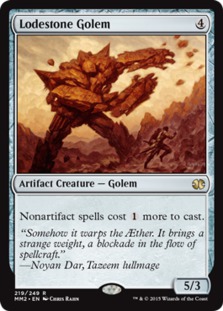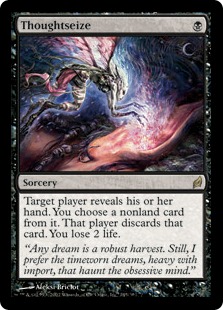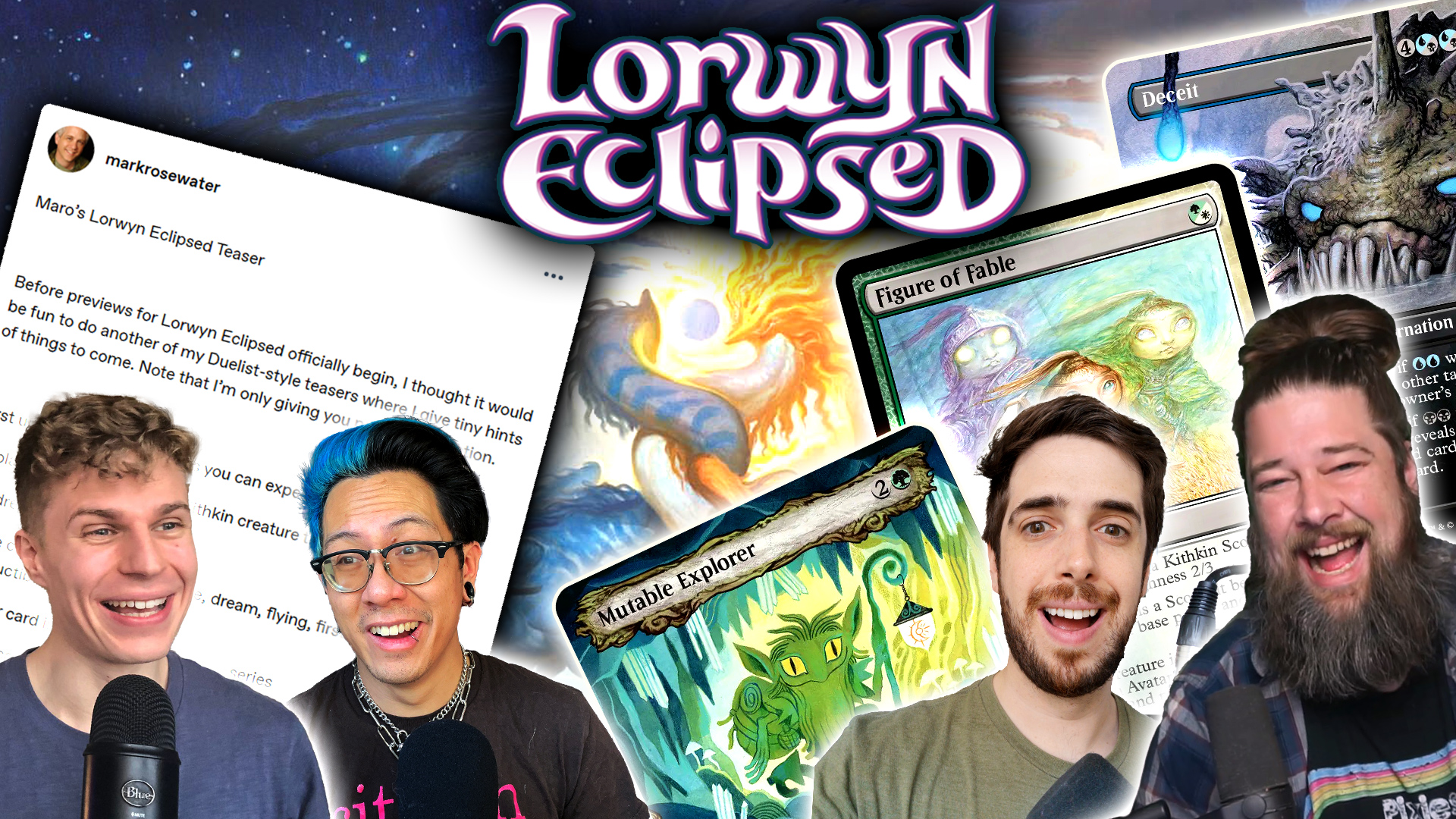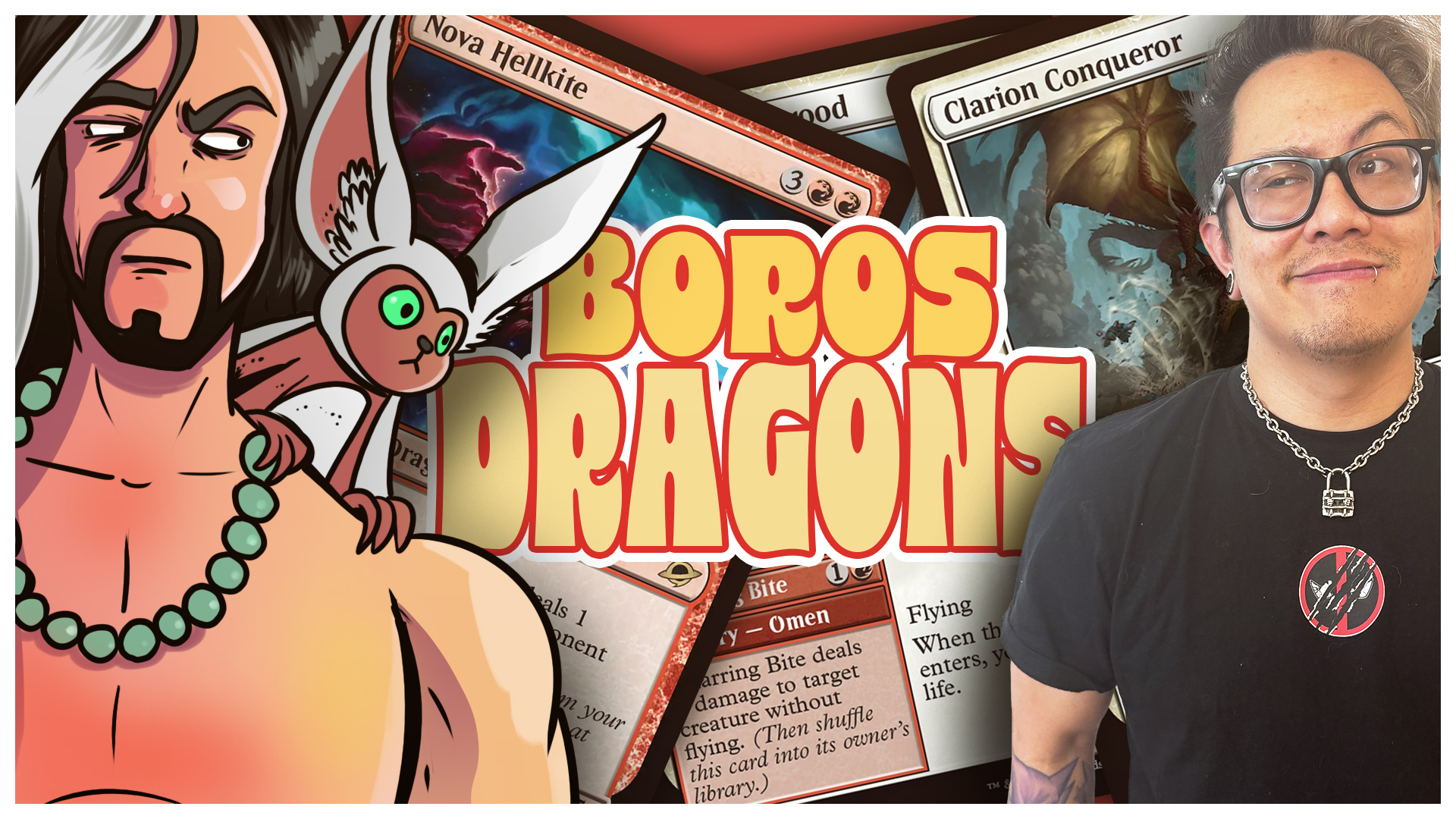Vintage 101: Riders on the Storm

Dark Ritual—Sandra Everingham
There's a Storm Coming...
Storm decks have been a part of Vintage since their namesake mechanic was first printed in Scourge. The prevalence of Storm decks in the format has waxed and waned depending on the current circumstances of the metagame, but the decks have always been undeniably powerful. These decks are full of must-answer bombs and card-drawing effects. Necropotence, Yawgmoth's Bargain, and Yawgmoth's Will can all win a game on their own, and if each one of those gets countered, a Storm pilot can just refill their grip with Timetwister or Wheel of Fortune. Ritual-Based Storm is one of the most aggressive combo archetypes in the format, and it is one of the few decks that can get you before you draw your first card.
This week, Vintage 101 will take a look at DPS (Dark Petition Storm), discussing key cards and looking at what makes the deck tick. I think it's only fair to look at an exciting combo deck for a change. The past several weeks have been inundated with Eldrazi creatures, much like the rest of competitive Magic!
Don't Call It a Comeback
With a goldfish for an opponent, Storm decks are surprisingly quick, usually winning within the first three turns. Needless to say, we can all expect to face opponents who will attempt to put a stop to our fun. The ugly truth is that the opposition Storm pilots face has grown tougher over the years. The first Storm decks didn't have to deal with Mental Misstep, Flusterstorm, Mindbreak Trap, or Lodestone Golem.



Ritual-Based Storm decks have a lot of critical one-drops they need to resolve, and Mental Misstep makes a mockery of them. Flusterstorm and Mindbreak Trap can potentially stop a Tendrils of Agony from hitting for lethal damage. Last but not least, Lodestone Golem and all of the associated mana-taxing cards from Workshop decks make life very difficult for a Storm player.
Within the last year, Storm players have finally been given a break. Workshop decks suffered two restrictions (Chalice of the Void and Lodestone Golem), and Storm players got a new unrestricted tutor tailor-made for the Ritual Storm strategy.

The Anatomy of Ritual Storm
The cards in a Ritual Storm deck can be loosely classified into a few different categories. There's mana, card manipulation, protection, and one or two win conditions. Ritual Storm is not a closed-loop combo deck or a two-card combo like Time Vault and Voltaic Key. There are many ways to generate lethal Storm, so each game will have multiple paths that could lead to victory.
Mana
Mana is something that is obviously important to every deck ever invented (other than Manaless Dredge, I suppose). In the Ritual Storm deck, it is even more important, because the extra mana generated from casting Ritual spells allows the Storm pilot to cast even more spells. Dark Ritual is the classic example of a ritual spell, but the deck has many analogous cards like Mana Vault. Sol Ring. Black Lotus, and Cabal Ritual.
Ritual Storm plays more mana than most decks; generally, about half of the deck is composed of mana. Usually, only twelve to fifteen mana sources are lands, with thirteen being the average land count used today. All five Moxen are utilized, as well as the rest of the restricted artifact mana available in Vintage. Some artifact mana like Lion's Eye Diamond, Mox Opal, and Chrome Mox are optional, but most of the other artifact mana sources are considered too vital to cut.
The process of generating an abundance of mana builds up the Storm count, ultimately ending in a lethal Tendrils of Agony or, in some cases, Empty the Warrens. Normally, mana and Storm will be created by casting rituals and artifacts, but a few other cards can also do the job.
Hurkyl's Recall and Chain of Vapor can't be classified as mana, but both can be used to make extra mana or cast a lethal Tendrils. Playing out a handful of Moxen, tapping them all for mana, then casting Hurkyl's Recall targeting yourself is one common method. Chain of Vapor can do similar work but requires you to control several lands that you're willing to sacrifice. Mana Vault, Sol Ring. and Mana Crypt work exceptionally well with Hurkyl's, and the colorless mana can be used to cast a variety of the more expensive cards in the deck.
Protection
There are multiple ways to make a Storm deck, and even Dark Ritual Storm decks have many variations. Some Ritual Storm decks in the past have utilized "pitch" countermagic like Force of Will and Misdirection. The predominant type of Storm deck played these days has its roots in a deck called "Grim Long" (named after Grim Tutor), and these decks run discard effects instead of Force of Will.
Force of Will has some built-in disadvantages that make it less than ideal for Ritual Storm. First of all, Force requires a high density of Blue cards to fuel it. Ritual Storm needs to play five or six "rituals" (Dark Ritual and Cabal Ritual) and a large amount of artifact mana to function correctly. In fact, most Storm decks are roughly 50% mana sources, none of which pitch to Force of Will. By not playing Force, you no longer have to worry about the color of the cards you're including.
Force of Will and its cousin Misdirection are also card disadvantage. You are trading two for one each time you use a Force, and if one Force isn't enough to resolve one of your bombs, you can be in trouble. Storm decks need a critical mass of mana and cards in hand to generate a lethal Storm count, so every card is very important.
Instead of counterspells, the Petition Tendrils decks use a combination of Defense Grid, Duress, and Cabal Therapy.

Defense Grid is an old piece of tech, but with the current crop of countermagic available in the format, it is very necessary. Duress and Cabal Therapy are great at picking apart your opponent's hands, but trading one for one can only go so far. Having a full grip makes crafting a lethal Storm count much easier, but casting discard spells lowers the amount of cards in your hand. Defense Grid can either soak up a opponent's Force of Will and allow one of your bombs to resolve, or it will resolve and negate your opponent's entire deck until you pass the turn.
Beyond simply protecting your spells, Defense Grid acts as an insurance policy for your draw-seven spells. Casting a Wheel of Fortune could possibly fill your opponent's hands with counterspells, negating all the work done by Duress and Cabal Therapy. With a Grid in play and ample mana, casting a draw-seven is much more likely to end up winning the game.
Later in the game, it may be possible for your opponent to cast a counterspell through your Grid, but a Force of Will will still cost at least three mana. Even if this is the case, you can likely craft a win at this point with as little as a single Duress for protection.



Duress and Cabal Therapy are the premiere discard effects for Vintage Storm decks. By itself, Duress is more powerful than Cabal Therapy, as no guessing is involved, but in a skilled player's hands, Cabal Therapy can be the most powerful discard effect in the game.
When you know for sure what your opponent is holding thanks to Gitaxian Probe or Duress, Cabal Therapy can hit any threat you need it to. Cabal Therapy can also take out multiple cards in one hit, making it an additional source of card advantage. Even if you're casting a "blind Therapy" where you don't know what your opponent has in their hand, it can be very effective. The goal in these situations is to name the only card or cards that could stop you. If your opponent is tapped out, naming Force of Will is probably the best call, but Mental Misstep or Mindbreak Trap could also be the right choice. You should also consider how many copies of a card are likely to be in your opponent's deck when you make a guess with Cabal Therapy. While Force of Will and Mental Misstep are usually four-ofs in most decks, Mindbreak Trap is played far less and thusly should probably not be named if you're unsure.
Gitaxian Probe doesn't exactly fall into the category of "protection," but it does give you valuable information about which cards you have to play around. Sometimes, you'll look with Probe and see you have the green light to try to win the game, but much of the time that will not be the case. Gitaxian Probe is also a fantastic Storm generator, as it is free to cast. Probe helps dig through your deck to hit land drops, and it fills your graveyard for Dark Petition. In conjunction with Yawgmoth's Will, Probe generates extra cards and Storm count.

Oftentimes, people ask me why Storm decks don't play Thoughtseize. The reason why the vast majority of deck builders do not add Thoughtseize to their Storm decks is that the two life lost from casting it really add up. Storm decks are already losing life from using Phyrexian mana to cast Gitaxian Probe; plus, each life point could be traded in for a card draw via Necro or Bargain. Storm decks use their life total as a resource, choosing to ignore most threats while they assemble a game-winning spell chain.
Most of the time, it is not worth paying two life to force your opponent to discard a creature that you would have just ignored anyway. Cabal Therapy can snag creatures if it is absolutely necessary, anyway. The only reason that I could see to include Thoughtseize would be as a hedge against the hatebears found in White Eldrazi decks (the only deck with Hatebears and a significant chunk of the metagame). Even with the White Eldrazi decks being so popular, I'm not sure it is worth it.
Card Manipulation
In order to cast a lethal Tendrils, you must be able to find important cards at the appropriate times. Slower draw engines aren't present in this type of Storm deck, so it relies completely on Tutors, cantrips, and draw spells to find what it needs.
Sequencing these spells is just as critical as anything else. In any given turn, there may be several spells that you could cast to either tutor for something or draw some cards. Each decision will require evaluation based on the game state, but some general rules apply.


Casting a Wheel of Fortune or Timetwister should not be your first line most of the time. If you have the option of resolving either a Dark Petition or a Wheel of Fortune, it's usually just better to cast the Petition, even if you can't win that turn. Tutoring for a Necropotence and casting it with your bonus Petition mana will only refill your hand. It's common sense that it will benefit you more to be the only one who gets to end the turn with a full hand.
Most of the time, I find that casting a draw-seven effect is better as a last resort, or if it's the only option left after playing out your hand of Moxen. There are times when going for a Wheel of Fortune or Timetwister first is the right play, but those situations don't come up as often. If you know that resolving a draw seven will make your opponent's hand worse, then by all means you should cast it. I have used a Wheel of Fortune to make my Dredge opponent discard their opening hand to hopefully take away their access to Bazaar of Baghdad, and it worked out well. Timetwister can also be used to slow a Dredge player down, possibly buying you another turn.
Gitaxian Probe is primarily used to figure out a strategy for winning the game, but it also keeps the cards in the deck in motion. There are times when it is correct to cast Probe simply to draw another card. I try to save Probes as much as possible, but if you must burn it for a card, so be it.

Dark Petition just screams out to be played in Ritual Storm. Many people doubted the validity of the card at first, but it has proven its worth. Achieving Spell Mastery is almost trivially easy in a deck playing Dark Rituals, and in most cases, it is the equivalent of playing five Demonic Tutors. Compared to the old Grim Tutor builds, it is easy to see why Dark Petition would be the preferred tutor effect.
One aspect of Dark Petition that people don't talk about as much is that, in some cases, it is almost better than a Demonic Tutor. Revealing a Petition with Mind's Desire can end up adding mana to your mana pool, increasing the chances that the Desire will end the game. Most of the time, a large Mind's Desire is lethal anyway, but in my opinion, having four Dark Petitions in your deck makes Desire even scarier for opponents.
The downside to Dark Petition is that without Spell Mastery, it ends up being just a worse version of Diabolic Tutor. A five-mana tutor is not where you want to be in Vintage; nobody will disagree with that. Still, I have found that I'm not actually worried about my opponent attacking my graveyard to disable my Dark Petitions. It is true that having someone nuke your graveyard can be a setback, but it does not guarantee that you will lose. It is very possible to win with Storm even through a Leyline of the Void. Plus, every card that someone plays to affect your graveyard is one less card to counter one of your bombs.

Mind's Desire is another card that transcends categories. A large enough Mind's Desire is as deadly as a Tendrils, but it still needs to find your actual win condition directly or indirectly. It is my opinion that Mind's Desire is even more potent now that Dark Petition has been printed, because hitting any tutor will usually be enough to win.
Casting a Mind's Desire for as little as five copies can be enough to win a game, but it is still important to cast the spells in the right order. If I reveal a Defense Grid or Duress with a Desire, I'll always cast them first to make sure I can resolve the other revealed cards.

Yawgmoth's Will is possibly the most broken card in the deck. It manipulates cards like the other entries in this category, but it also can generate mana with rituals or artifacts like Black Lotus, and it generates a lot of Storm by allowing you to replay your graveyard. YawgWill is the easiest way to win a game, but it is not actually needed to achieve victory much of the time. When I first started playing Storm, it was common for me to use Yawgmoth's Will as a crutch, but as time passed, it became easy to win without using my graveyard.
Win Conditions
Storm decks are known for having minimal win conditions. The main reason why Storm can get away with only running one or two kill cards is that there is an abundance of card manipulation in the deck,
Normally, Storm decks will kill with Tendrils of Agony. Some decks like to run Empty the Warrens as a backup win-con, and some decks simply run two copies of Tendrils itself. There is another classic Storm win condition that has fallen out of favor recently, but it is worth discussing a bit.


It used to be commonplace to have Tinker in a Storm deck to use in conjunction with Memory Jar and Blightsteel Colossus. This tactic isn't widely utilized anymore, but it is a viable option. Blightsteel is very weak to Dack Fayden though, which probably explains why people don't use it as much anymore.
Storming in Vintage
The environment in Vintage isn't quite as hostile toward Storm as it has been in the past. but the deck still has some bad matchups in the metagame. Storm doesn't like to deal with Thorn of Amethyst or hatebears, and one of the more popular decks is packed full of both. White Eldrazi seems to be tailor-made to ruin a Storm player's day; practically every other card is hard for Storm to beat.
On the plus side, White Eldrazi and Workshop decks can't interact on the stack. This means that a Storm pilot is usually free to cast all of their bombs against those decks. If you can win fast enough, your opponent won't be able to even cast a Thalia. Guardian of Thraben.
Against the rest of the field, Storm should have a decent matchup in most cases. Vintage is a powerful format, and sometimes you can rise to the top if you manage to overpower the opposition. Defense Grid and Duress put in a lot of work, and they can make cards like Force of Will useless. Tendrils is one of the few cards that is a quicker clock than a Monastery Mentor.
Slower combo decks like Oath and Grixis Thieves can't usually keep up with the speed of Dark Petition Tendrils. The slower decks are also prone to having their hand ruined by a Duress or Therapy.
I don't expect DPS to become the deck to beat in Vintage, but I think it is a deck that is always capable of winning a tournament in the right hands. I would recommend DPS to anyone who is bored of Monk tokens and Eldrazi creatures. You might not win every match, but you'll undoubtedly have a good time doing it!

That's all the time I have for this week. If you have any burning questions, let me know in the comments. You can follow me on Twitter @josephfiorinijr—Islandswamp on Magic Online













